By Gretchen Cliburn
BKD Wealth Advisors

Gretchen K. Cliburn, CFP® CDFA® BKD Wealth Advisors
The new year brings new opportunities to support those charitable 501(c)(3) organizations you feel passionate about. Before making your first contribution of the year, create a plan so your gifts are meaningful and, when possible, reduce current or future taxes.
What causes do you want to benefit? Most often we base our gifting on personal experiences. Think about the positive change you want to make through your charitable gifts. Do you want to create a family charitable activity? Meet a current and specific need? Donate in memory of someone special? Help treat a root cause, or help alleviate the symptoms? If you make charitable contributions, your financial plan should include strategies for gifting and reflect the causes that are most important to you.
Build an overall gifting strategy that also is tax-efficient. Once you establish which charities you want to support, you can determine how to make your contribution, what assets to gift and which tax benefits you may receive (if any). Regardless of which charity you plan to support, there are several strategies to consider:
- Make a qualified charitable distribution (QCD) – A QCD is a distribution directly from your individual retirement account to a qualified charity. You must be 70 ½ or older to be eligible to make a QCD, and the donated amount (up to $100,000 per year) is excluded from your taxable income. Keeping your taxable income lower also may help reduce the amount of your Social Security income that is taxable and the amount of your Medicare premiums.
- Gift appreciated stock – It generally is more tax-efficient to give appreciated securities than to write a check. If you have a portfolio with stocks and/or mutual funds in a taxable account, g., individual, joint or trust account, some of your investments may have increased in value since your initial purchase cost. For example, if you paid $10 a share and the investment is now worth $20 a share, you have capital appreciation. If you choose to gift this investment to charity, you may get a tax deduction based on the full amount of the gift and may eliminate owing capital gains tax on the appreciation of that investment.
- Use a donor-advised fund (DAF) – Using a DAF to make charitable contributions provides many benefits:
- If you make many smaller gifts to charities and do not want to gift small amounts of appreciated stock multiple times, consider using a DAF. You can make one annual gift of an appreciated asset to the DAF and then grant those gifts from the DAF by check directly to the charity throughout the year.
- You may experience a significant tax event, g., selling a business or receiving a large bonus, in a given year and want to make a one-time larger charitable donation for the tax benefit. For those who do not want to give those dollars to a charity all at once or do not know which causes they ultimately want to support, a DAF might be the solution. A DAF allows you to receive the tax benefit in the year you gifted to the fund. Then, as opportunities allow, you can grant to charities from the DAF in future years.
- Under the Tax Cuts and Jobs Act (TCJA), which took effect in 2018, standard deductions have almost doubled and new limits have been placed on some itemized deductions—while others completely disappeared. Those who have itemized their charitable deductions in past years but are reconsidering this method due to the TCJA might consider charitable bunching. Charitable bunching involves grouping two years or more of your charitable gifts into a single year to exceed the itemization threshold (in other years, take the standard deduction). By placing those charity funds into a DAF, you create a pool of funds to continue your regular monthly or annual donations in a tax-efficient way. For example, if you normally give $10,000 per year to charities, with the TCJA you might consider gifting $30,000 every three years to your DAF and then using the DAF to continue gifts to your charities in the amount of $10,000 each year.
- If you want to create a family philanthropic legacy, consider gifting to a DAF and using it as a tool to engage and teach your children or grandchildren to look for opportunities to help others. For example, you could allot a certain amount of the fund to each family member and have each present to the family “board” on why that donation should be made. Other family members also can contribute to the DAF.Other types of assets and many other gifting strategies can be considered. We recommend that you consult with your financial advisor and CPA to help determine the best strategy for your unique situation. Then work with your wealth manager to help ensure your charitable gifts are processed correctly to achieve your goal of reducing taxes while accomplishing your charitable endeavors. For more information, contact Gretchen or your trusted BKD advisor. Happy giving in 2019!

